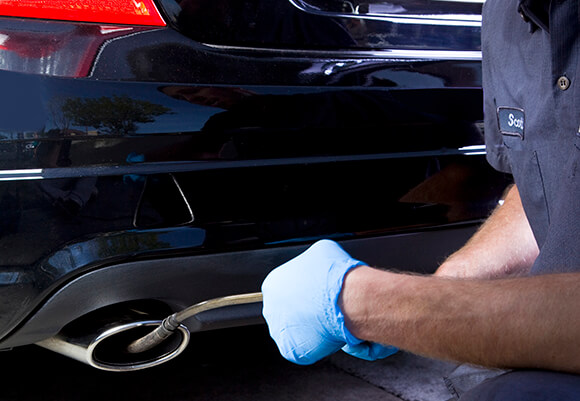WLTP - How emission values will affect company car costs
22/12/2018 00:00:00by Mark McKenna22/12/2018 00:00:00WLTP - How emission values will affect company car costsBluedrop Services

A new Worldwide Harmonised Light Vehicle Test Procedure (WLTP) has been introduced to test new cars more accurately on fuel consumption and emission figures.
In light of modernised technologies, such as hybrids and EVs, the test replaces the New European Driving Cycle (NEDC) to provide a more accurate test for fuel consumption and carbon emissions of vehicles.
The NEDC, in more recent years, hasn’t been able to keep up with the industry which provided poor results that weren’t reflecting real-driving conditions. It was introduced back in 1980 and was based on theoretical driving, instead, so was never really producing accurate results.
How will WLTP provide better results?
WLTP will measure CO2 emissions more accurately as well as fuel consumption of vehicles and the harmful pollutants they produce. With the introduction of real-time data and telematics, WLPT can be used in combination with new technology to record this information. It will test speeds, acceleration, braking, and aerodynamics as well as resistance, powertrains and optional equipment including bigger tyres.
The test will also be longer, and test further lengths and average speeds to correctly record data. It will also have a real-driving emission test component. Whilst this component is significantly improved from NEDC, there are also some additional variables in this test such as driving style, traffic and the weather. Whilst it will also test for the lightest and heaviest versions of a vehicle, it won’t take into account the exact load of a vehicle.
Manufacturers are required to publish their figures
Manufacturers will need to publish WLTP statistics for all new vehicles moving forward as governments move towards their zero-emissions targets. The test falls in line with the need for businesses to monitor their fuel consumption and carbon emissions in order to help protect the environment.
In a bid to reduce the levels of NOx in major cities to help protect the public, governments are working towards clean air zones which could have a massive impact on fleet operators. With added pressure to move to electric vehicles, fleets have to be more mindful of their carbon footprint.
What are fleets required to do?
Fuel efficiency is a big component in a fleet operators’ budget, and so the new test may benefit companies. Therefore, it will be important for fleets to advertise the WLTP results as soon as it becomes available so that you can assess your economical efficiency in light of the changes.
It may help to save money, reduce efficiency and help you make more informed choices to plan for the future.
What will WLTP mean for BIK, VED and national insurance?Previously fleet companies were being incentivised to introduce cleaner models to their fleets through reduced benefit-in-kind and VED rates.
Moving forward, the introduction of WLTP is likely to affect these costs as well as national insurance contributions for company vehicles used for employee private use.
BIK is calculated based on the vehicle’s CO2 emissions, therefore, an increase in rates under WLTP could mean that costs go up. There is still some uncertainty surrounding these figures so more clarity needs to be put in place.
However, for all registered vehicles before 1st September 2018, there is unlikely to be an impact as NEDC figures will be used. For any new registrations from 1st 2018 a NEDC correlated figure will be used so an increase in tax costs may be noticeable.
By 6th April 2020, all vehicles will be based on the WLTP emissions figure, and so far there is no change in tax charges regarding higher emissions figure.
Will the change be the same across all vehicles?
Whilst the overall increase in fuel consumption and emissions will be 20%, it will differ significantly for every model. This could mean some more favourable models don’t meet the required standards for fleets and could really start to affect costs.
Particularly, from April 2020 onwards, the WLTP results will start to affect the incentives such as benefit-in-kind, national insurance and VED costs. This could lead a reduction in the uptake certain vehicles such as SUVs, and optional equipment such as larger wheels and heavy loads.
For further advice on reducing your fleet’s carbon footprint, read our informative guide.Return to blog menuWant to find out more about Bluedrop's Motor Fleet Insurance?
Call our friendly team now for the right insurance cover - at the best price
+441489780491
Calls recorded for training and quality.



 Privacy and Cookie Policy
Privacy and Cookie Policy